Your bedroom is more than just a place to sleep—it’s a sanctuary where you begin and end each day. Thats why creating a space that feels both cozy and stylish is essential for your wellbeing. Whether you’re working with a tiny apartment bedroom or a spacious master suite, the right decor choices can transform your room into a haven that reflects your personality while promoting restful sleep.
According to a 2023 survey by the National Sleep Foundation, people who reported being “very satisfied” with their bedroom environment were 75% more likely to report good sleep quality. This connection betwen our surroundings and our rest isnt surprising, but it does highlight how important thoughtful bedroom design really is.
In this comprehensive guide, we’ll explore 20 inspiring bedroom decor ideas that balance aesthetics with functionality, helping you create a space that nurtures both your body and mind. From foundational elements like color and lighting to personal touches that make the space uniquely yours, these ideas will guide you towards creating the bedroom of your dreams.
1. Foundation Elements: Setting the Stage
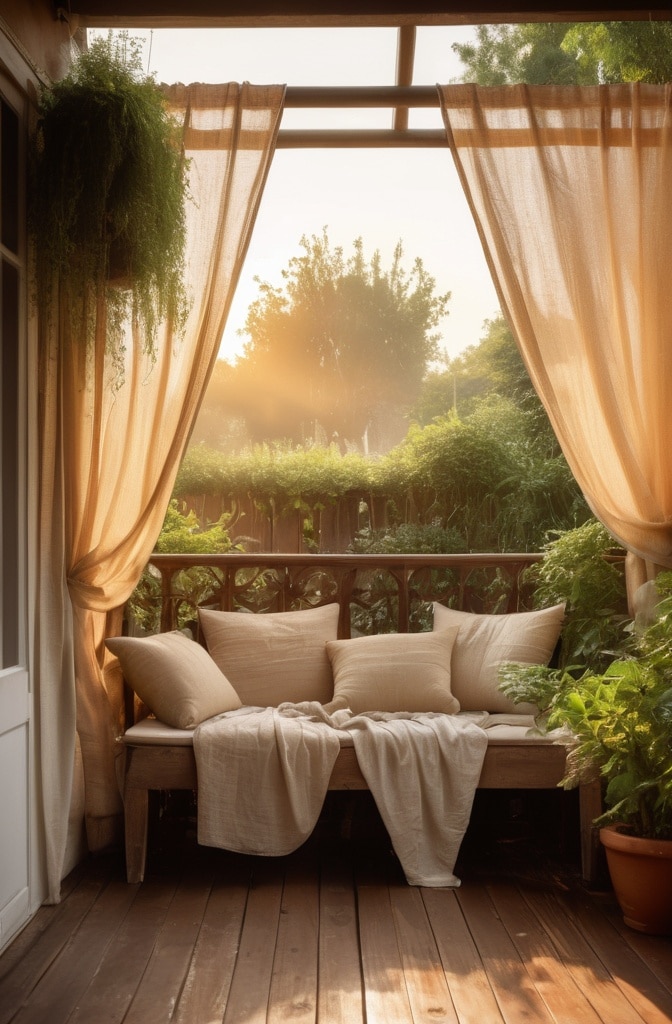
A. Color Psychology for Bedroom Spaces
The colors surrounding us profoundly affect our mood, energy levels, and even our sleep patterns. Choosing the right color scheme for your bedroom is therefore one of the most impactful decisions you’ll make during a redesign.
“Colors don’t just change how a room looks—they change how we feel in that space,” explains interior designer Maria Johnson. “In bedrooms specifically, colors can either promote relaxation or stimulate activity, so choosing wisely is crucial.”
Research from the University of Minnesota suggests that blue tones promote feelings of calmness and can actually lower blood pressure and heart rate—making blue-based color schemes ideal for restful bedrooms. Conversely, bright reds and oranges tend to energize and may interfere with sleep quality.
Some particularly effective bedroom color combinations include:
- Serene Blues and Soft Greens – Mimic nature’s calming elements with sage green walls paired with navy accents
- Warm Neutrals – Combine sand, taupe, and warm grays with terracotta accents for a grounded feel
- Muted Purples – Lavender and lilac promote relaxation while adding more personality than basic neutrals
- Dramatic Darks – Charcoal or navy walls create a cocooning effect when balanced with lighter bedding and accessories
Before committing to a color, try this designer trick: paint large poster boards with your chosen colors and prop them against the wall at different times of day. Colors can appear dramatically different depending on your room’s natural light, so this simple test can save you from expensive mistakes.
B. Lighting Layers: Creating Ambiance Through Illumination
Lighting isn’t just functional—it’s one of the most powerful mood-setting tools in your bedroom design arsenal. Most designers recommend incorporating three distinct lighting layers:
- Ambient lighting – Your room’s general illumination, usually from ceiling fixtures or recessed lights
- Task lighting – Focused light for reading or other activities, typically from bedside lamps
- Accent lighting – Decorative lighting that highlights architectural features or creates atmosphere
In recent years, smart lighting has revolutionized bedroom environments. Systems like Philips Hue or LIFX allow you to program lighting scenes for different activities or times of day. Some even sync with sunrise and sunset to support your natural circadian rhythm—a feature that sleep scientists increasingly recommend for improved rest quality.
For natural light optimization, consider how window treatments can work for you rather than against you. Layered options like sheer curtains paired with blackout blinds give you maximum control, allowing gentle filtering during the day while ensuring darkness during sleep hours.
For an unexpected lighting element that doubles as art, consider:
- Pendant lights with sculptural shapes that cast interesting shadows
- Backlit headboards that create a soft glow
- Himalayan salt lamps that emit a warm, amber light shown to promote relaxation
- LED strip lighting tucked behind a floating shelf or headboard
2. Texture and Material Integration
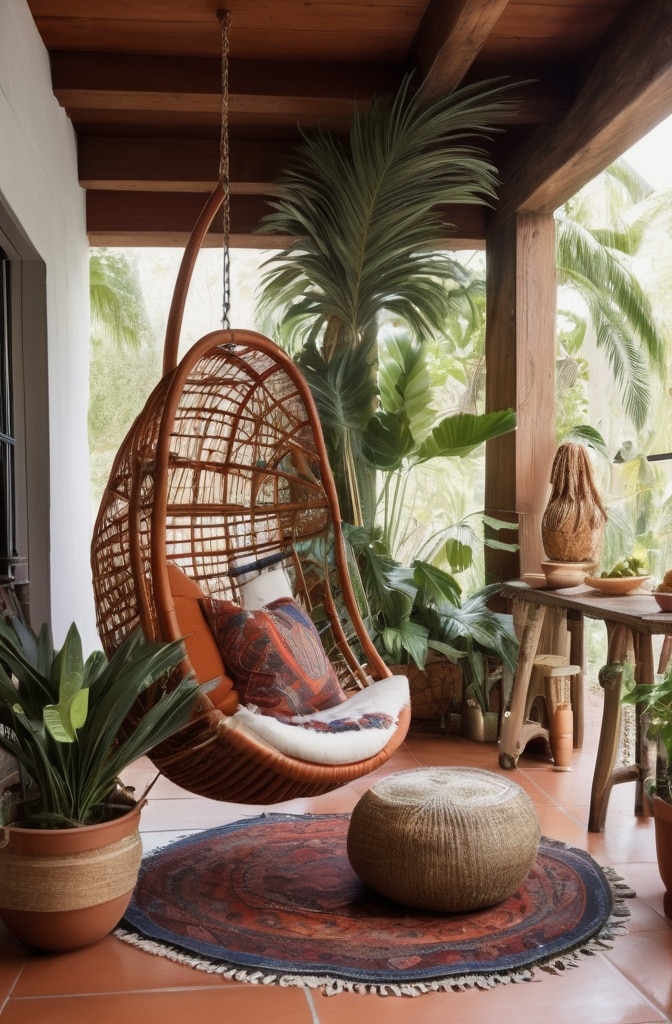
A. Natural Elements: Bringing the Outdoors In
Incorporating natural materials into your bedroom doesnt just look good—it feels good. Research in the field of biophilic design reveals that connecting with nature, even through interior elements, can reduce stress, improve cognitive function, and enhance mood.
Sustainable material choices have moved firmly into the mainstream, with options like:
- FSC-certified wooden bed frames and dressers
- Cork flooring that’s both renewable and naturally sound-absorbing
- Organic cotton, linen, and hemp textiles
- Bamboo sheets that offer breathability and sustainability
When mixing wood tones—something many homeowners are afraid to attempt—interior stylist Thomas Chen offers this advice: “Think of the forest. In nature, many different wood tones exist harmoniously. The key is to choose woods with similar undertones and to create intentional contrast rather than accidental clashing.”
For plant selection, consider both aesthetics and function. NASA research has identified several houseplants that excel at purifying indoor air, including:
Even in low-light bedrooms, options like ZZ plants and certain varieties of pothos thrive with minimal maintenance, bringing life to dark corners.
B. Textile Layering: The Art of Coziness
Few elements create coziness more effectively than thoughtfully layered textiles. The tactile experience of sinking into a well-dressed bed signals to our brains that it’s time to relax and unwind.
For strategic bedding layering that works year-round, consider this approach:
- Start with high-quality sheets (aim for 100% cotton with a thread count between 300-500)
- Add a lightweight quilt or coverlet as a middle layer
- Top with a duvet or comforter that can be swapped seasonally
- Finish with throws and decorative pillows that can be easily removed before sleep
When mixing patterns and textures, follow the rule of three: combine one large-scale pattern, one medium-scale pattern, and one small-scale pattern with complementary colors. This creates visual interest without overwhelming the eye.
“The most common mistake I see is overcommitting to permanent pieces in bold patterns,” notes textile designer Priya Ahluwalia. “Instead, invest in quality basics for your larger pieces and express your personality through accessories that can be changed more easily.”
For textile maintenance, consider these practical tips:
- Wash sheets weekly in cool water
- Air pillows outside monthly to freshen them
- Dry clean or spot clean decorative items seasonally
- Rotate mattresses every six months for even wear
3. Space Enhancement Strategies

A. Mirror Placement: Beyond Basic Reflection
Mirrors serve both functional and aesthetic purposes in bedroom design, but their strategic placement can dramatically transform your space. In smaller bedrooms especially, mirrors create the optical illusion of expanded space when positioned to reflect natural light or an attractive view.
Interior architect David Morgan suggests: “Think of mirrors as additional windows. When placed opposite an actual window, they not only double the perceived light but also bring views of the outdoors deeper into your space.”
Different mirror styles complement different decor aesthetics:
- Ornate gold frames for traditional or maximalist spaces
- Clean-lined leaning floor mirrors for modern rooms
- Vintage beveled mirrors for eclectic or bohemian styles
- Grouped small mirrors as an alternative to traditional wall art
In feng shui philosophy, mirrors should never face the bed directly, as this is believed to disturb sleep energy. Whether or not you follow these principles, many find that seeing their reflection while trying to fall asleep creates an unsettling feeling. Instead, position mirrors where they reflect something pleasant—like artwork or a window with a nice view.
4. The Fifth Wall: Ceiling Design Opportunities
The ceiling—often called the “fifth wall”—represents one of the most overlooked design opportunities in bedroom decor. Yet this surface comprises roughly one-sixth of your room’s visual space!
Even with standard ceiling heights (typically 8-9 feet in modern homes), there are numerous ways to add interest overhead:
- Paint your ceiling a shade lighter than your walls for subtle depth
- Apply removable wallpaper for pattern without commitment
- Install lightweight faux wood beams for architectural interest
- Add subtle texture with techniques like color washing or limewash
For homes with higher ceilings (10+ feet), more dramatic options become feasible:
- Tray ceilings with integrated lighting
- Painted ceiling medallions around light fixtures
- Wood planking for rustic or coastal aesthetics
Designer Elena Rodriguez notes, “Ceilings don’t have to shout for attention. Sometimes the most effective ceiling designs are those that complement the room subtly—creating cohesion rather than competition with other elements.”
Read This Blog: https://hometranquil.com/hallway-ideas/
5. Furniture Selection and Arrangement
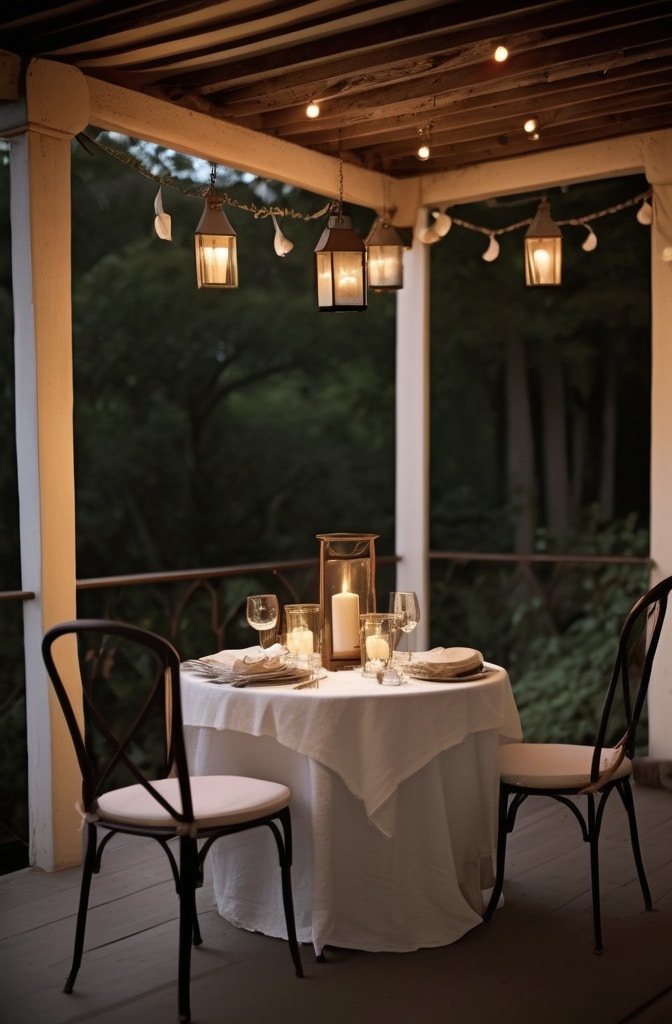
A. Bed Frame as Focal Point
As the largest piece of furniture in your bedroom, your bed frame inevitably becomes a focal point. Selecting the right style isnt just about aesthetics—it’s about making appropriate choices for your space constraints and storage needs.
The evolution of bed frame styles through recent decades reveals interesting trends:
- 1980s-1990s: Heavy wooden frames with tall headboards
- 2000s-2010s: Platform beds with minimalist profiles
- 2010s-Present: Mixed material frames combining wood, metal, and upholstery
For small spaces, consider these space-efficient options:
- Platform beds with built-in drawers
- Murphy beds that fold into wall units when not in use
- Loft beds that create usable space underneath (not just for kids anymore!)
A 2023 survey by Apartment Therapy found that 68% of respondents living in spaces under 800 square feet utilized some form of storage bed, gaining an average of 15 cubic feet of storage space—equivalent to a small closet.
For those looking to add personality without investing in a new frame, DIY headboard projects offer endless possibilities:
- Reclaimed wood planks sealed and mounted on the wall
- Vintage doors or architectural salvage pieces repurposed
- Fabric-wrapped panels that add both color and sound absorption
- Painted geometric designs directly on the wall behind the bed
B. Nightstand Alternatives and Styling
Traditional matching nightstands flanking a bed are giving way to more creative and functional solutions. This trend acknowledges both space limitations and the changing ways we use our bedrooms.
“Think about what actually happens at your bedside,” advises organizational expert Jamie Liu. “Do you need charging stations for devices? Space for books? A secure spot for medications? Your nightstand solution should address your specific needs, not just fill space.”
Interesting alternatives to consider:
- Wall-mounted floating shelves that free up floor space
- Repurposed bar carts offering mobility and multiple shelves
- Small writing desks that double as workspaces
- Stacked vintage suitcases or trunks for unique storage
For asymmetrical but balanced setups—increasingly popular in contemporary design—try pairing different pieces that share one common element, such as color, height, or material. This creates cohesion without predictability.
To maintain clutter-free surfaces, implement the “five item rule”—limit visible objects on your nightstand to five intentionally chosen pieces. Typical combinations might include:
- A lamp
- A small plant or flower
- A book or e-reader
- A small dish for jewelry
- A carafe for water
6. Personal Touches and Accessories
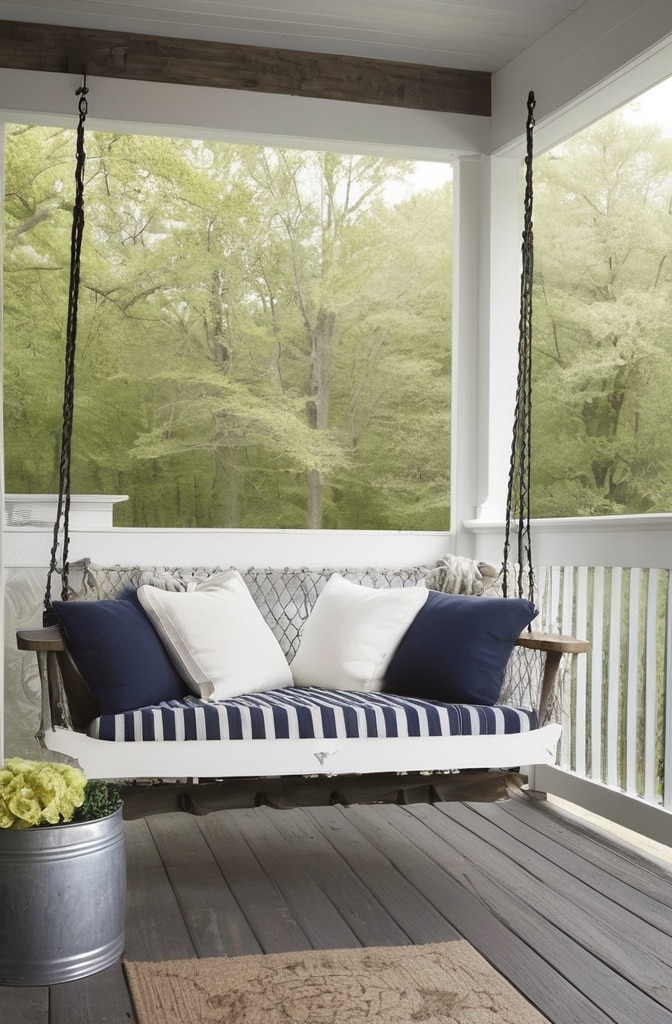
A. Wall Statements: Beyond Basic Art
Wall decor offers perhaps the most direct opportunity to express your personality in your bedroom. Moving beyond basic framed prints opens up exciting possibilities for creating unique focal points.
For gallery wall arrangements, consider these approaches based on your room’s shape:
- Long, narrow rooms: Horizontal arrangement that emphasizes width
- High-ceilinged rooms: Vertical grouping that draws the eye upward
- Small rooms: Tightly clustered arrangement with thin frames
- Irregular walls: Organic, freestyle arrangement that embraces asymmetry
Textile artist Constance Wu notes, “Fabric wall hangings add acoustic benefits along with visual interest. In bedrooms especially, softer surfaces help absorb sound for a more peaceful environment.”
Alternative wall decor options worth exploring include:
- Woven wall hangings or macramé pieces
- Sculptural elements like ceramic wall pockets or wooden reliefs
- Vinyl decals for temporary but impactful patterns
- Framed textiles like vintage scarves or meaningful fabric scraps
When creating meaningful art collections, mix professional pieces with personal items—children’s artwork in quality frames, shadow boxes containing mementos, or photographs printed on canvas all add depth and storytelling to your space.
B. Accent Pieces That Tell Your Story
Small decorative elements are the personality-filled “punctuation marks” in your bedroom’s design story. These pieces should spark joy while maintaining cohesion with your overall aesthetic.
Travel souvenirs deserve thoughtful incorporation rather than random placement. Consider grouping items from different destinations that share a color palette, or dedicate a specific shelf or wall section as a “travel memory” display.
Interior stylist Rebecca Torres suggests, “The difference between a cluttered room and a curated one is intentionality. Ask of each accent piece: Does it serve a purpose? Does it bring joy? Does it harmonize with the space? If the answer to any of these is no, reconsider its place.”
For rotating seasonal displays that keep your space fresh:
- Spring: Botanical prints, fresh flowers, lighter textiles
- Summer: Coastal elements, brighter accents, natural materials
- Fall: Warmer metals, textured ceramics, deeper colors
- Winter: Soft lighting, heavier textiles, reflective surfaces
7. Special Considerations for Different Spaces

A. Small Bedroom Maximization
Compact bedrooms present unique challenges but also opportunities for incredibly efficient, cozy spaces. Visual tricks can dramatically impact perceived spaciousness:
- Mount curtain rods closer to the ceiling and extend them beyond window frames to create illusion of height and width
- Choose furniture with visible legs to create sense of openness underneath
- Select glass or acrylic accent pieces that don’t visually “fill” space
- Use large-scale art rather than multiple small pieces to reduce visual clutter
Furniture selection criteria should prioritize multi-functionality:
- Beds with integrated storage drawers
- Desks that double as vanities
- Ottomans with hidden storage for extra linens
- Headboards with built-in shelving
For vertical storage, look to often-overlooked opportunities:
- The back of doors (ideal for hooks, racks, or shallow shelving)
- Wall space between windows
- Corner spaces with custom shelving
- Over-door shelving for books or decorative items
A space-saving layout worth considering is the “efficient L” arrangement, where the bed is positioned in a corner with furniture arranged along the two adjacent walls. This creates a natural pathway through the room while maximizing floorspace.
B. Master Suite Transformation
Larger bedrooms benefit from zoning—creating distinct areas that serve different functions while maintaining visual cohesion. Common zones include:
- Sleep zone: Centered around the bed, optimized for rest
- Dressing zone: Near closets with good lighting and a full-length mirror
- Relaxation zone: A seating area for reading or conversation
- Wellness zone: Space for meditation, stretching, or exercise
Luxury touches that justify their investment through longevity and impact:
- High-quality blackout window treatments
- Upgraded lighting with dimmer controls
- Premium natural fiber rugs
- Custom built-ins that maximize storage while minimizing visual bulk
For partners sharing spaces with different aesthetic preferences, designer Monica Garcia recommends this approach: “Identify your common ground first—colors you both enjoy, styles you both appreciate—then use those as your foundation. Allow personal expression in more easily changeable elements like art, accessories, and textiles on each person’s side of the room.”
8. Stylistic Approaches
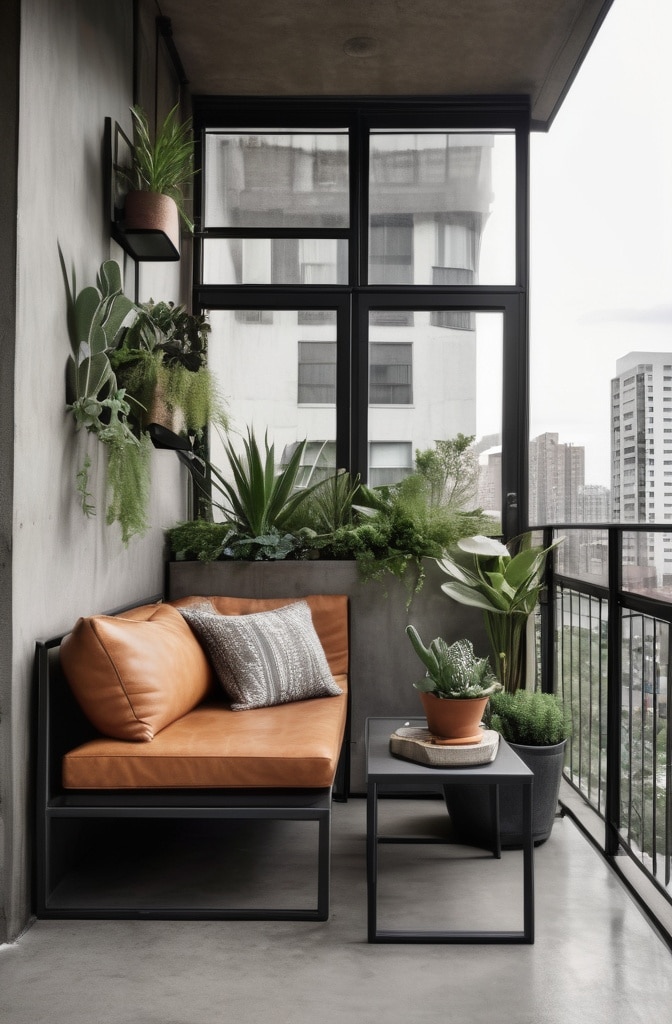
A. Minimalist Serenity
True minimalism extends beyond the “white room with nothing in it” stereotype. At its core, minimalism is about intentionality—choosing fewer things of higher quality and purpose.
The concept draws on the Japanese principle of “ma,” which celebrates negative space as a design element rather than emptiness to be filled. This approach is particularly effective in bedrooms, where visual calm promotes mental relaxation.
In minimal spaces, texture becomes even more crucial. Without lots of objects or colors creating visual interest, tactile variation prevents sterility:
- Nubby linen duvet covers
- Smooth wooden surfaces
- Plush wool rugs
- Sculptural ceramics with interesting glazes
Quality considerations become paramount when you own less. Investment pieces worth considering:
- A well-crafted bed frame that will last decades
- High-quality mattress and bedding for better sleep
- Multipurpose furniture with timeless design
- Lighting fixtures that function as sculptural elements
For maintaining minimalism amid everyday life, implement these practices:
- One-in-one-out policy for new acquisitions
- Regular decluttering sessions (monthly works well for most)
- Hidden storage solutions for necessary but visually distracting items
- Charging stations that conceal electronic cables
B. Bohemian Comfort
Modern bohemian style has evolved from its 1970s origins while retaining its focus on personal expression, comfort, and cultural appreciation. Today’s “new bohemian” approach embraces:
- Curated eclecticism rather than maximalist chaos
- Global influences incorporated respectfully
- Natural materials with sustainability emphasis
- Rich textures with contemporary silhouettes
“The most successful bohemian spaces tell a personal story,” explains stylist Jordan Reid. “Rather than purchasing a ‘bohemian bedroom set,’ true boho style accumulates gradually through travels, treasured gifts, artisan purchases, and items with personal history.”
For budget-friendly bohemian sourcing:
- Thrift stores for vintage textiles and ceramics
- Estate sales for unique furniture pieces
- Etsy for handmade items from global artisans
- Local art schools for original artwork by emerging artists
Seasonal transformations are especially effective in bohemian spaces:
- Summer: Lightweight cotton throws, botanical elements
- Fall: Added layers of velvet and wool, warmer lighting
- Winter: Faux fur textures, extra throw pillows, candlelight
- Spring: Refreshed plants, lighter textiles, nature-inspired accents
C. Timeless Elegance with Modern Twists
Creating a bedroom with lasting appeal requires balancing classic elements with thoughtfully chosen contemporary touches. This approach ensures your space feels neither dated nor trendy.
Classic elements worth investing in include:
- Well-proportioned case goods (dressers, nightstands) in solid wood
- Quality upholstered headboards in neutral fabrics
- Traditional lighting silhouettes updated with modern finishes
- Natural fiber floor coverings like wool or sisal
To incorporate contemporary touches in a traditional framework:
- Update traditional furniture with modern hardware
- Pair antique pieces with contemporary art
- Choose bedding with updated versions of classical patterns
- Select lighting with traditional forms but contemporary materials
“Heritage pieces should enhance rather than dominate a space,” advises antique dealer Charles Whitman. “The most livable rooms combine periods and styles thoughtfully, allowing each piece space to breathe and be appreciated.”
For future-proofing your design, focus on:
- Neutral foundations with personality added through changeable elements
- Quality construction over trendy details
- Classic proportions that won’t look dated
- Materials that develop character with age rather than degrading
9. Practical Implementation
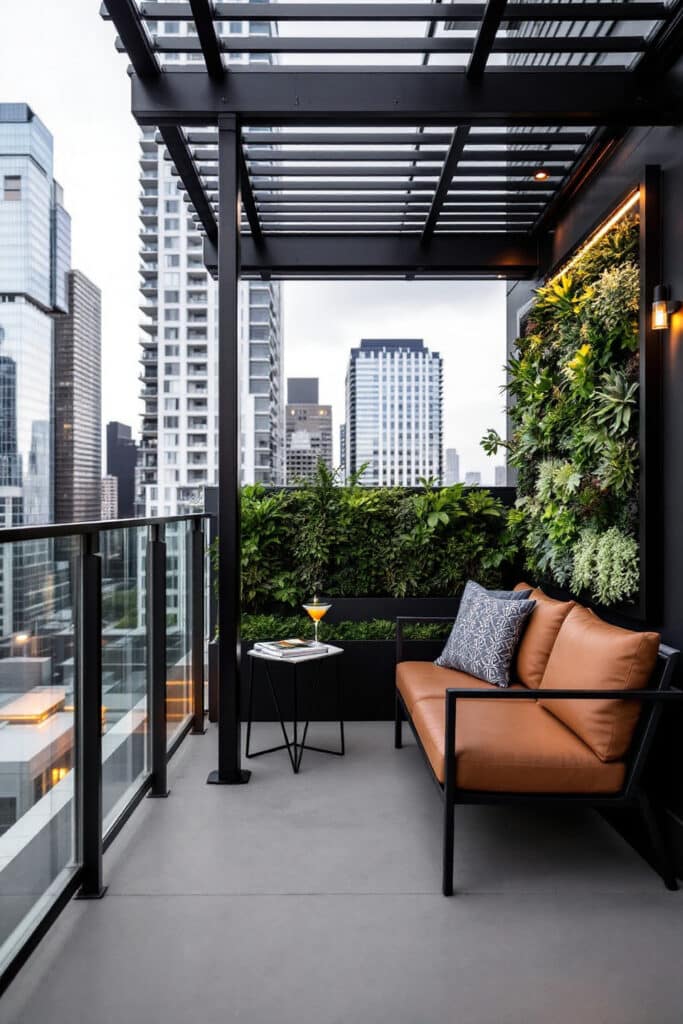
A. Phased Approach to Bedroom Transformation
Few of us have the luxury of redesigning our entire bedroom at once. A phased approach allows thoughtful evolution while respecting budget constraints.
For maximum impact with limited funds, prioritize in this order:
- Bedding – The focal point of the room and directly impacts comfort
- Lighting – Transforms mood and functionality with relatively low investment
- Wall treatments – Paint or wallpaper creates dramatic change at moderate cost
- Window treatments – Affects light quality, privacy, and overall aesthetics
- Furniture – Invest gradually in quality pieces that will last
Weekend projects that make significant impact:
- Painting an accent wall
- Installing floating shelves
- Creating a gallery wall
- Rearranging furniture for better flow
- Updating cabinet hardware
Professional help is worth considering for:
- Custom window treatments
- Electrical work for new lighting
- Built-in storage solutions
- Complex wall treatments like wallpaper or specialty painting techniques
B. Maintenance and Evolution
A beautiful bedroom requires ongoing care and occasional refreshes to maintain its appeal and functionality. Establishing seasonal routines helps distribute maintenance efforts throughout the year:
Spring:
- Deep clean carpets and upholstery
- Rotate mattress
- Wash pillows and duvet inserts
- Swap heavy winter bedding for lighter options
Summer:
- Clean window treatments
- Check for and address any sun damage to fabrics or wood
- Ensure proper function of fans and air conditioning
- Reorganize closets for warm weather needs
Fall:
- Deep clean before winter months of closed windows
- Replace summer bedding with warmer options
- Check lighting as days grow shorter
- Address any repairs before holiday season busyness
Winter:
- Add extra layers for warmth
- Check heating vents for proper function
- Consider humidifier if air becomes too dry
- Refresh indoor plants that may struggle with less light
Different materials require specific care approaches:
- Wood furniture: Dust regularly, polish quarterly with appropriate product
- Upholstery: Vacuum regularly, spot clean promptly
- Natural fiber rugs: Vacuum with suction only (no beater bar), rotate periodically
- Mirrors and glass: Clean with vinegar solution rather than ammonia-based products
Conclusion
Creating a bedroom that feels both cozy and stylish isn’t about following rigid rules or implementing every trend. Instead, it’s about thoughtfully considering how the space supports your wellbeing and reflects your personal story.
The most successful bedrooms evolve gradually, accumulating layers of meaning and comfort over time. By focusing on quality over quantity and function alongside beauty, you create a sanctuary that truly supports rest, reflection, and renewal.
Whether your style leans minimalist or bohemian, traditional or contemporary, the principles of good bedroom design remain constant: prioritize comfort, incorporate elements that bring joy, and create a space that feels authentically yours.
We’d love to see how you implement these ideas in your own space! Share your bedroom transformations with us using #CozyStylishBedroom, and let us know which of these 20 inspiring ideas made the biggest difference in your home.
Additional Resources
For those seeking to deepen their understanding of bedroom design, these resources offer valuable guidance:
Recommended Books:
- “The Sensual Home” by Ilse Crawford
- “Sleep: Harness the Power of Sleep for Optimal Health and Wellbeing” by Nick Littlehales
- “The Life-Changing Magic of Tidying Up” by Marie Kondo
Helpful Planning Tools:
- RoomSketcher – Free basic version for bedroom layout planning
- Color Palette Generator – Create cohesive color schemes from favorite images
- Measure App – AR-based room measuring for accurate furniture fitting
Sustainable Decor Sources:
- Certified B Corporations in home goods (Avocado, West Elm, Coyuchi)
- Local crafts collectives and artisan marketplaces
- Antique and vintage markets for one-of-a-kind finds
Remember that creating your ideal bedroom is a journey rather than a destination—one that evolves as you do. Enjoy the process of crafting a space that nurtures your best self, one thoughtful choice at a time.
